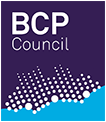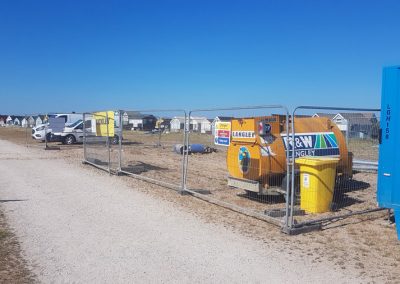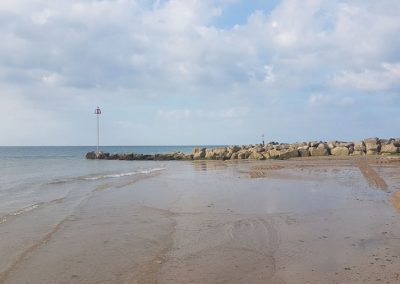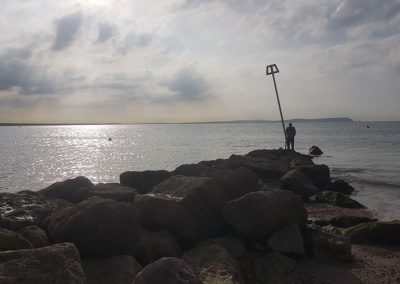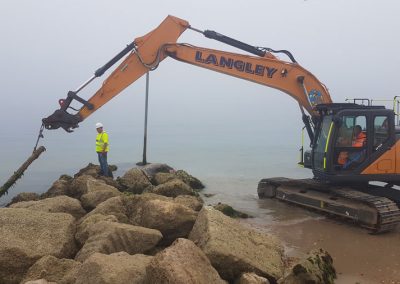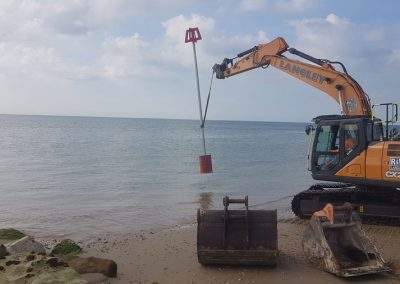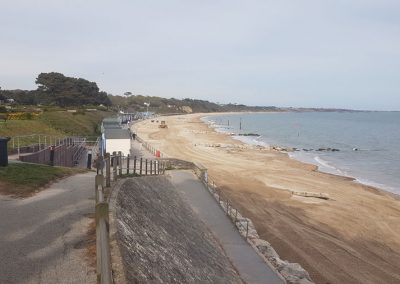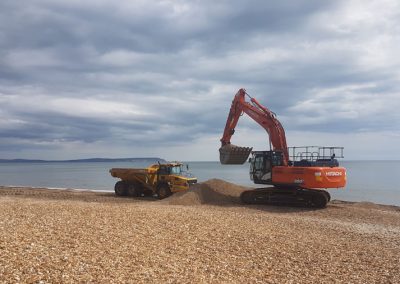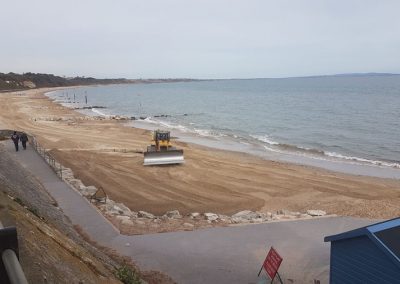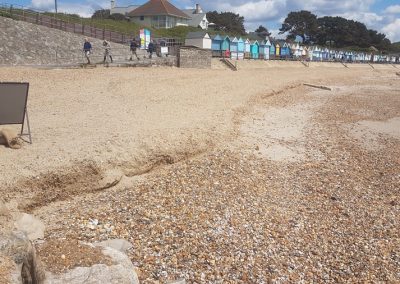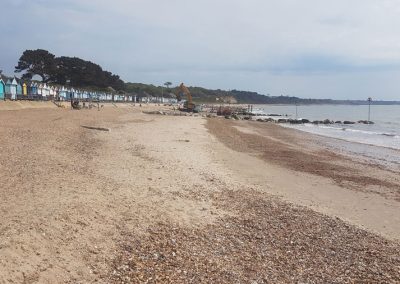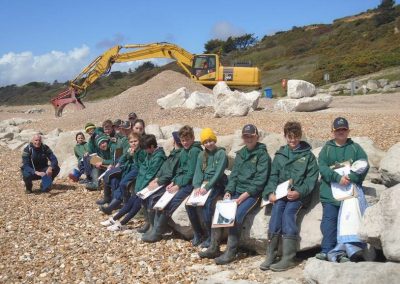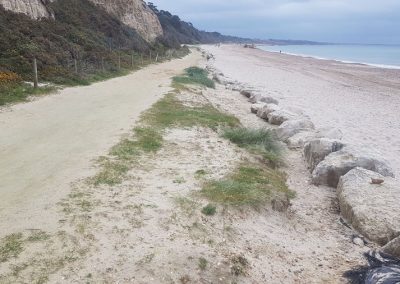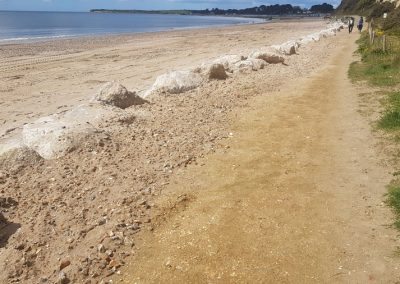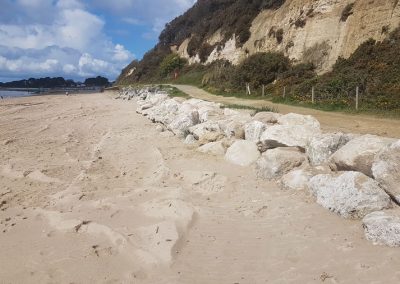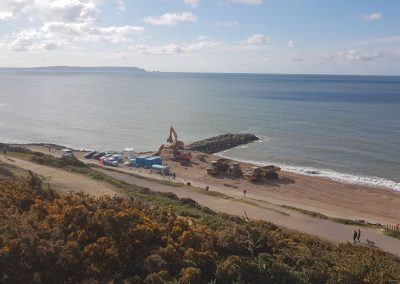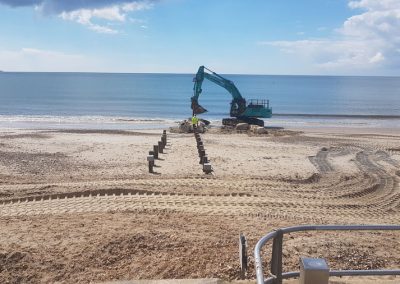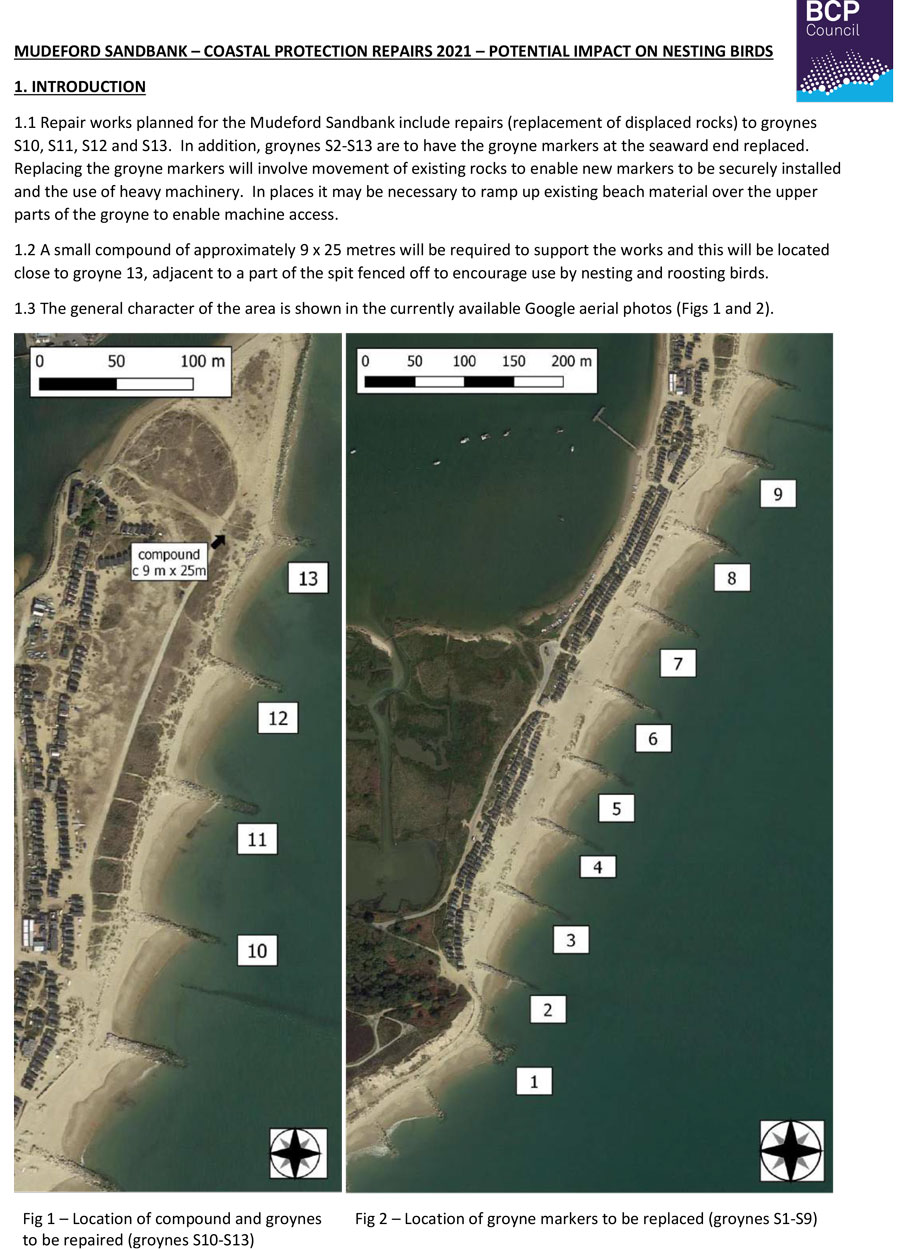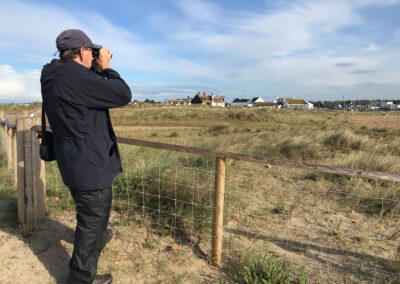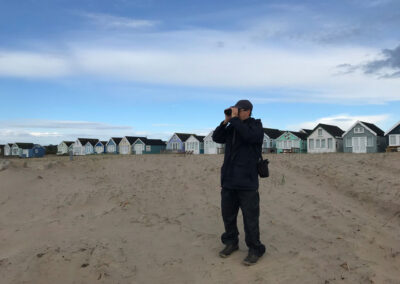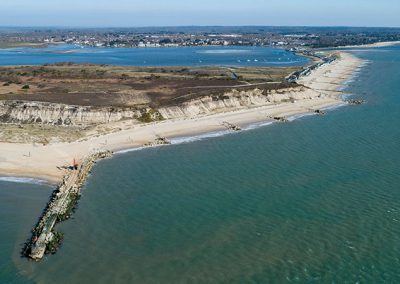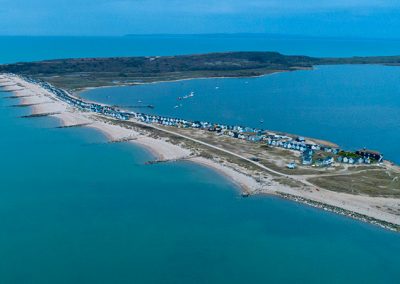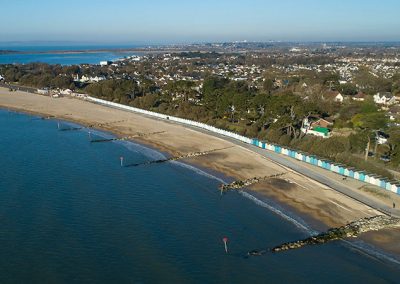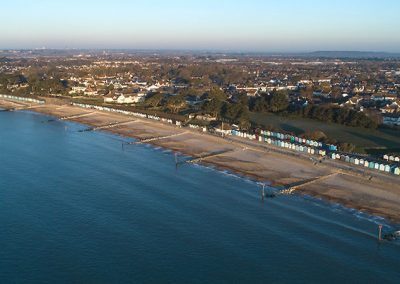Completed Projects
Christchurch Beach Recycling and Rock Groyne Repairs, spring 2021
Recycling existing beach material to adjust levels at Avon, Friars Cliff and Highcliffe beaches, carrying out repairs to the existing rock groynes across the Christchurch frontage, and placing additional rock armour to reinforce the Steamer Point path.
LEAD AUTHORITY
BCP Council
WORKING WITH
START DATE
From 4th May 2021
END DATE
18th June 2021
About the project
BCP Council monitors beach levels across our entire frontage. Our aim is to provide a high and wide beach which is the first level of coastal defence and protects the seawall, which in turn protects the areas behind.
These works at Christchurch will help ensure that local beaches are protected from erosion by the sea. By redistributing beach material we will ensure a good level of protection is maintained and works together with the groynes (sediment retaining structures) and other defences.
Works comprised:
- Rock groyne repairs between Avon beach & Highcliffe Beach
- Rock armour reinforcement at Steam Point path
- Beach recycling between Avon Beach & Friars Cliff Beach, and at Highcliff Beach
- Rock groyne repairs at Mudeford Sandbank
Projects are described below:
Rock groyne repairs, Mudeford Sandbank – June 2021
Groyne realignment works & new groyne markers at Mudeford Sandbank complete this project
Beach recycling – May/June 2021
Beach levels have been topped-up using local beach material at:
- Avon Beach and Friars Cliff Beach, across 4 groyne bays using material recycled from Highcliffe beach
- Highcliffe Beach, using material recycled from Highcliffe’s eastern groyne bays.
Beach top-up works: Friar’s Cliff looking east to Highcliffe
Beach top-up works: Friar’s Cliff looking east to Highcliffe
Beach material is loaded onto the dumper truck and taken to top-up beaches which are low in volume
Beach material is loaded onto the dumper truck and taken to top-up beaches which are low in volume
The beach material is then re-distributed in groyne bays which need topping-up
The beach material is then re-distributed in groyne bays which need topping-up
Forres Sandle Manor School timed their geography school trip well. They visited Highcliffe to compare and contrast coastal defences with Barton
Forres Sandle Manor School timed their geography school trip well. They visited Highcliffe to compare and contrast coastal defences with Barton
Steamer Point path – May 2021
The path has been reinforced with additional rock armour to protect it from sea erosion, completed May
Before: the area for additional rock reinforcements
Before: the area for additional rock reinforcements
Rock groyne repairs, Avon Beach to Highcliffe Beach – May 2021
Existing groynes were re-aligned, using rock that has been displaced by wave action in recent years and adding new rock to strengthen the groynes. Groyne beacon posts, which act as navigation aids, were fixed or replaced.
Groyne works underway with beacon posts to be realigned
Groyne works underway with beacon posts to be realigned
We are repositioning displaced rocks onto the groynes and adding new rock armour where required
We are repositioning displaced rocks onto the groynes and adding new rock armour where required
The eastern end of Highcliffe Beach (below Cliffhanger Café) is being used to store the additional Portland limestone rock armour needed for the rock groyne and path repairs
At the eastern end of Highcliffe Beach, the compound stores the Portland limestone required for rock groyne & path repairs
Environmental Considerations
Prior to the works starting we carried out a number of environmental surveys across the frontage from Mudeford Sandbank to Highcliffe to mitigate for the risk of nesting birds. This was because the work areas, in particular at Mudeford Sandbank, were identified as a potential risk for nesting birds, especially the rare Rock Pipit, which has been known to nest in rock groynes.
Bird assessments were carried out by local Ecologist Nick Woods and BCP Council’s Biodiversity Officer. The findings are presented in a report produced May 2021:
May 2021: Ecologist Nick Woods carries out a bird survey to ensure there are no protected species such as Rock Pippits nesting in the groynes
Monitoring beach volumes from Mudeford to Highcliffe
Occasionally beach material within Christchurch Bay is lost because of ongoing natural processes and winter storms. We carefully monitor the beach levels to ensure they provide the required level of coast protection. Before the Covid-19 pandemic, we had originally anticipated that beach levels on both sides of the harbour at Mudeford Sandbank (as far as Hengistbury Head) and Avon Beach to Highcliffe would require topping-up. This would have involved the recycling and re-distribution of beach material from the offshore sand bars.
However, our latest survey analysis indicates that Mudeford Sandbank’s overall beach volume has increased since July 2019 and has remained quite stable since monitoring began in 2003. This means that in 2021 we do not need to top-up the Sandbank’s beach levels but we will continue to monitor levels closely. The beach levels from Christchurch harbour entrance to the boundary with Chewton Bunny have also seen an overall net increase in volume since 2003.
